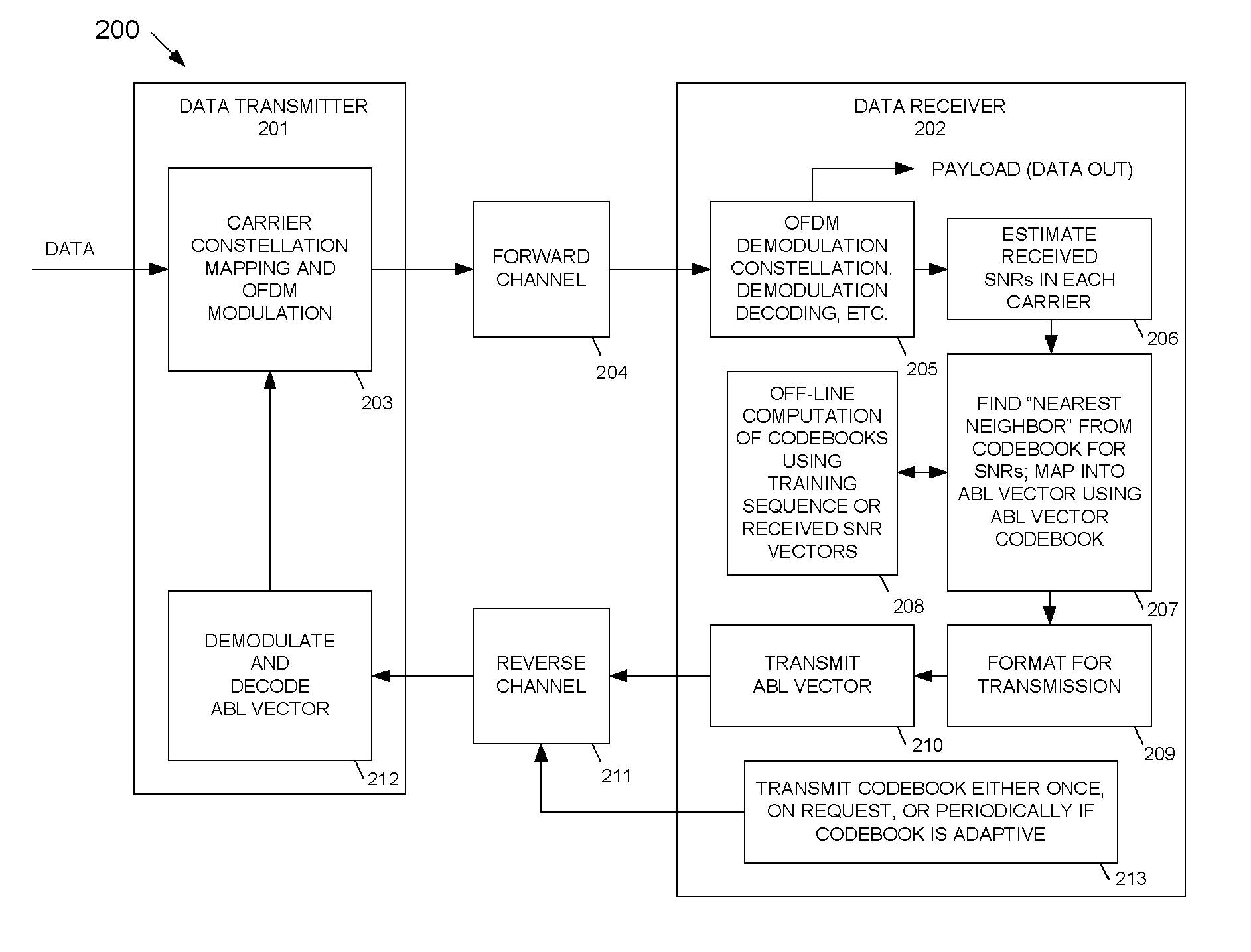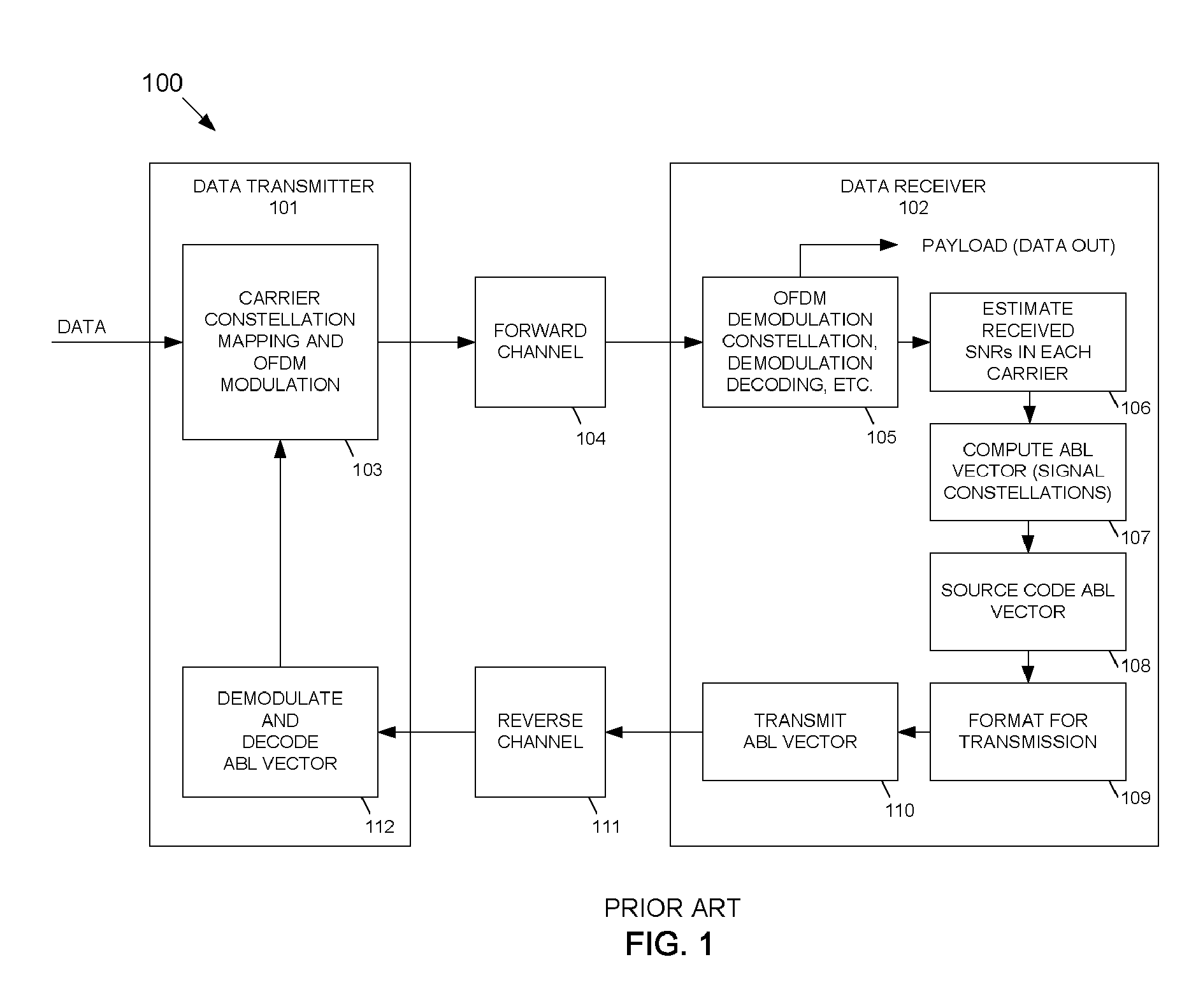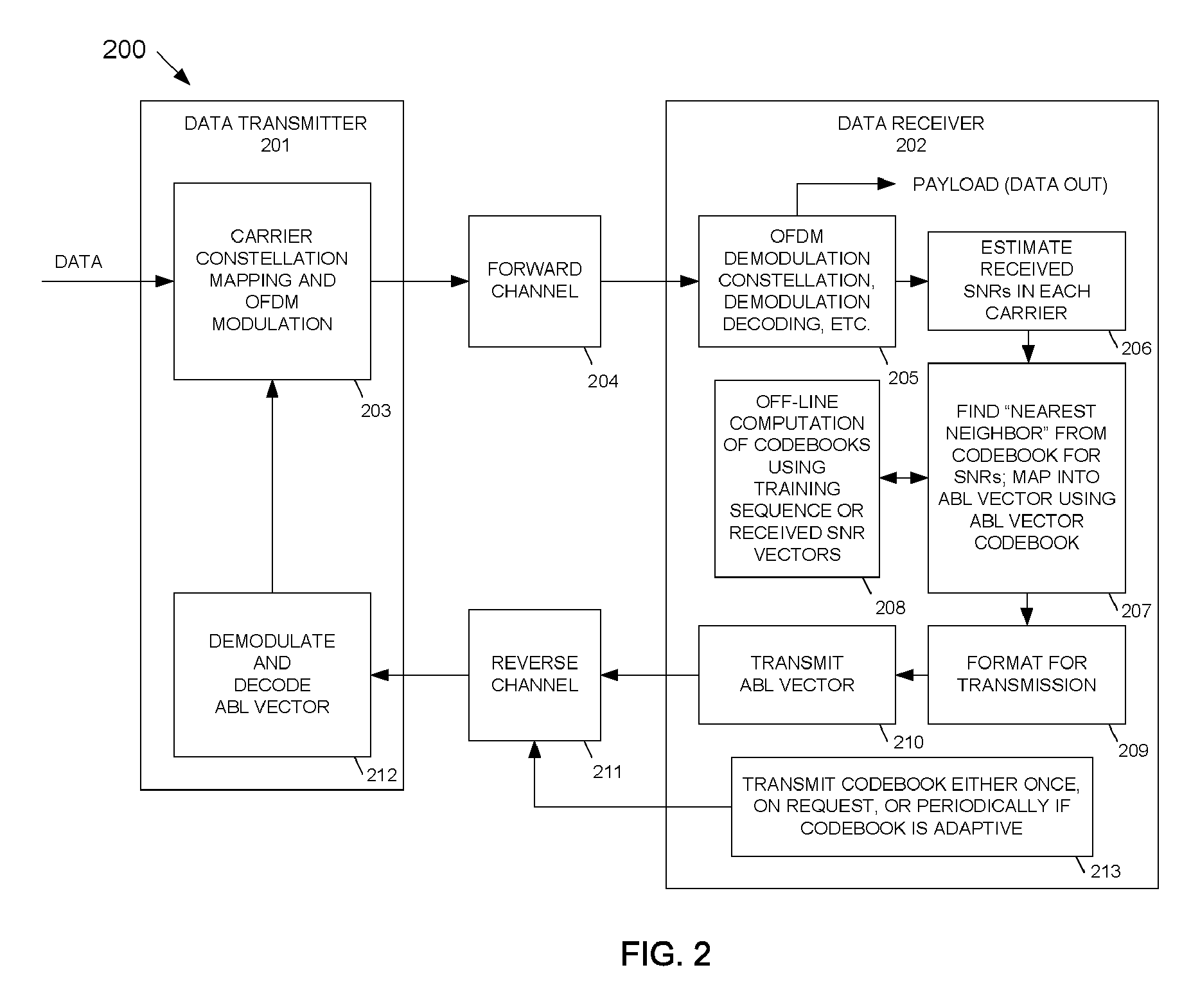System and method for adaptive bit loading source coding via vector quantization
a vector quantization and source coding technology, applied in multi-frequency code systems, signal characterisation, transmission path sub-channel allocation, etc., can solve the problems of computational complexity, dsl channels, dsl coding is not adaptive, and the overall data rate can be reduced. computational complexity, the effect of reducing computational complexity
- Summary
- Abstract
- Description
- Claims
- Application Information
AI Technical Summary
Benefits of technology
Problems solved by technology
Method used
Image
Examples
Embodiment Construction
[0019] The present invention provides a vector-quantization-based technique for source coding Adaptive Bit Loading (ABL) vectors. While vector-quantization-based techniques have been used mostly for image and speech processing (see for example, R. M. Gray, “Vector Quantization,” IEEE ASSP Magazine 1, 2, April 1984), a vector-quantization-based technique has several advantages over simple trellis codes for achieving data compression. For example, codebooks can be arranged for minimizing computational complexity in comparison to trellis encoding, which is as computationally expensive as a Viterbi decoder. Further, codebooks can easily be made adaptive. Accordingly, as channel conditions change, the codebook can be changed using a simple frame-exchange sequence to periodically signal codebook updates. Further still, a vector-quantization-based technique can also achieve a scalable solution for adaptive bit loading by varying the codebook description and code signaling. Thus, the presen...
PUM
 Login to View More
Login to View More Abstract
Description
Claims
Application Information
 Login to View More
Login to View More - R&D
- Intellectual Property
- Life Sciences
- Materials
- Tech Scout
- Unparalleled Data Quality
- Higher Quality Content
- 60% Fewer Hallucinations
Browse by: Latest US Patents, China's latest patents, Technical Efficacy Thesaurus, Application Domain, Technology Topic, Popular Technical Reports.
© 2025 PatSnap. All rights reserved.Legal|Privacy policy|Modern Slavery Act Transparency Statement|Sitemap|About US| Contact US: help@patsnap.com



